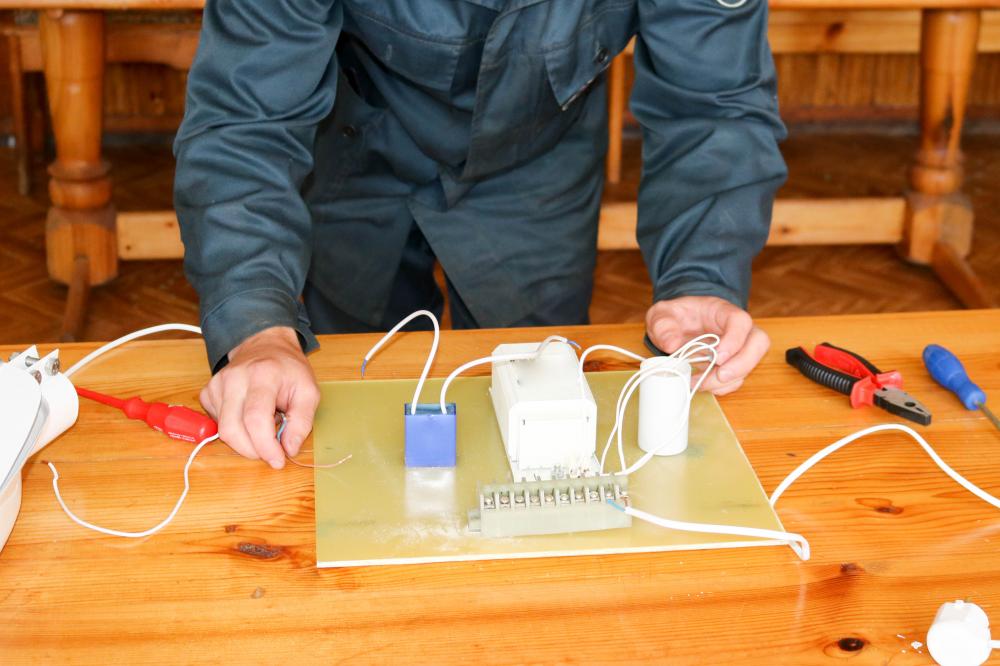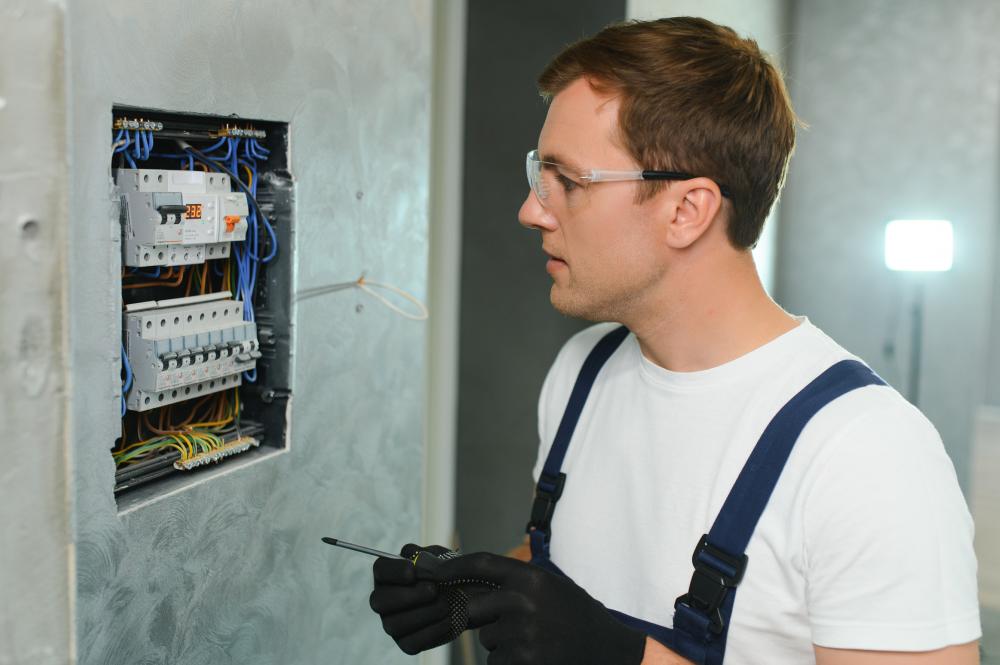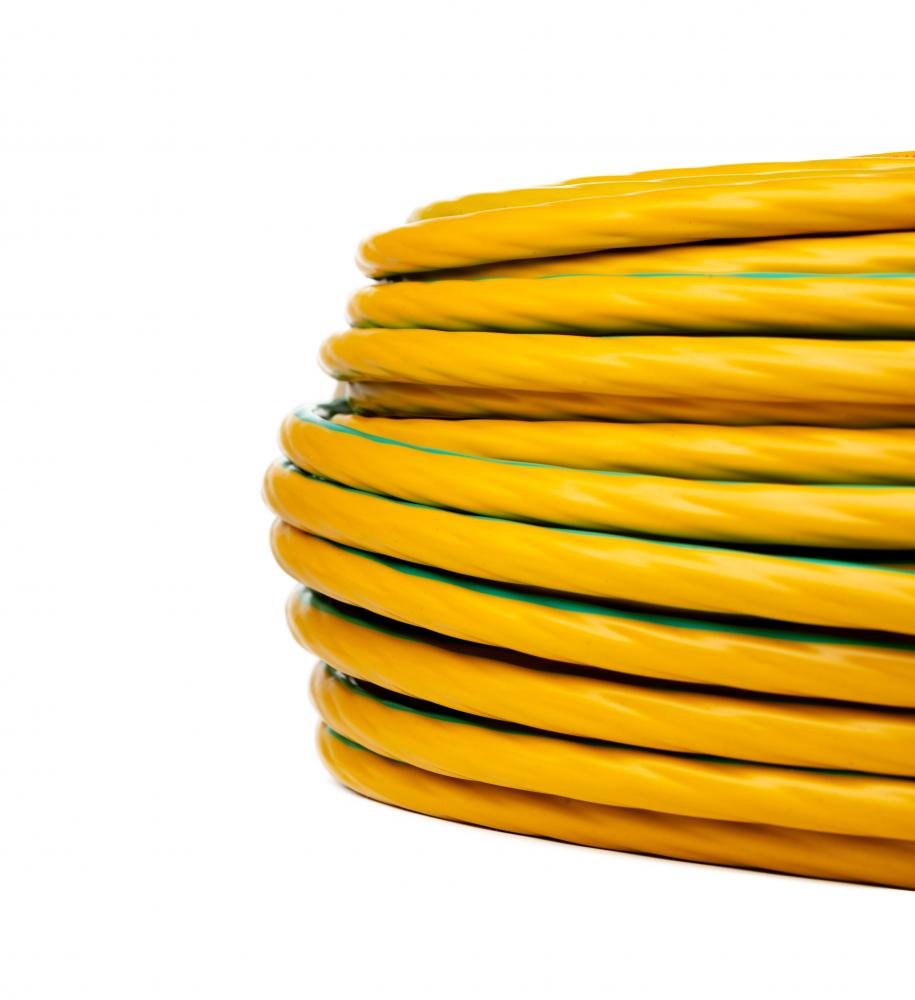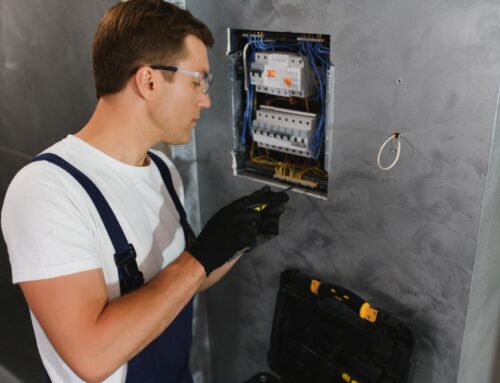
Dealing with Power Surges
Our team at Beverly Hills Electrician Pros often encounters power surges when homes face unexpected voltage spikes. These surges can cause significant damage to electronics and appliances. It's crucial to understand that though these electrical anomalies occur in a flash, their impact can linger, causing substantial harm. To mitigate this, we suggest installing whole-house surge protectors. This proactive measure shields your electrical systems from unpredictable power fluctuations.
It's not uncommon for surges to stem from internal sources as well. Common culprits include faulty wiring or overloaded circuits. Regular maintenance checks help identify these issues, potentially sparing expensive repairs. Our seasoned electricians can identify signs of lurking dangers, ensuring your home stays protected.
We've also found that certain regions experience surges due to local electrical grid inconsistencies. In these cases, it may be wise to consult with your utility provider to address broader issues.
Frequent Bulb Burnouts and Flickering Lights
At Beverly Hills Electrician Pros, we understand how bothersome frequent bulb burnouts can be. The root cause often lies in poor wiring or high voltage supply. Light fixtures not fitted correctly can exacerbate the problem. Choosing bulbs compatible with your fixtures is essential to prevent recurring issues.
Flickering lights, meanwhile, signal potential underlying issues such as loose wiring or circuit overloads. Ignoring these signs may lead to more severe problems. We recommend addressing these problems immediately. Let our professional electricians handle these diagnostics to ensure your safety.
We have also seen cases where light bulbs are used incorrectly in dimmer circuits, causing flickering. Ensuring that bulbs match your dimmer's specifications can prevent unnecessary headaches.
For cases where flickering persists even after troubleshooting, it might be time to upgrade your electrical systems. Investing in modern solutions not only resolves issues but can enhance overall energy efficiency.
Outlets and Electrical Shock Concerns
Outlets tend to wear out over time, leading to hazards like electrical shocks. We've often found that simple fixes, like replacing outdated receptacles, can prevent potential accidents. Our electricians conduct thorough inspections to ensure every outlet in your home functions optimally and safely.
For homes with children, installing tamper-resistant outlets is an excellent preventative step. These outlets prevent accidental shocks by blocking foreign objects from being inserted. It's a simple yet effective upgrade we recommend for family homes.
Furthermore, awareness of the signs of faulty outlets, like warm plugs or loose fits, can prevent future complications. These are tell-tale signs of worn-out outlets, and addressing them quickly can make a significant difference.
Tripping Circuit Breakers and Energy Efficiency
Tripping circuit breakers are a common grievance among homeowners. While it can be alarming, it often means your system is protecting itself from overload. Our team at Beverly Hills Electrician Pros frequently advises clients on load balancing to prevent this issue. Avoid clustering high-consumption devices on the same circuit to ease the load.
Energy efficiency should also be a priority for homeowners. Outdated electrical systems can lead to excessive energy use, inflating your bills. Simple upgrades, like installing energy-efficient lighting or optimizing appliance use, can make a significant difference. Our electricians are adept at conducting energy audits to identify potential savings. A small change can lead to substantial savings over time.
For those committed to reducing their carbon footprint, we also provide guidance on integrating renewable energy sources into existing systems.
Finally, considering an electrical panel upgrade may be beneficial, especially for older homes. Modern panels improve safety and efficiency, protecting your home from potential electrical hazards.

Understanding Electrical Systems
At Beverly Hills Electrician Pros, we believe that a solid grasp of your electrical system is the foundation for effective troubleshooting. Start by familiarizing yourself with the circuit breaker panel. This is the heart of your home's electrical system. It distributes electricity throughout your property. Knowing which breaker controls which part of your home can save time and effort during electrical troubleshooting.
Circuit diagrams are invaluable in understanding electrical systems. They provide a visual representation of how circuits are constructed. When performing electrical troubleshooting, refer to these diagrams to identify specific components and their relationships. This approach minimizes trial and error, ensuring a systematic identification of issues.
Safety First
Always prioritize safety during electrical troubleshooting. Before beginning any work, ensure that the power is switched off at the breaker panel. This precaution prevents electrical shocks. Verify the absence of current with a multimeter to be extra cautious. Remember, the risk of injury is real when dealing with electricity.
Another essential safety tip is to use insulated tools. These tools are specifically designed for electrical work. They minimize the risk of accidental contact with live wires. Wearing rubber-soled shoes further enhances safety by providing insulation from the ground. Our team at Beverly Hills Electrician Pros emphasizes these practices to our clients to ensure their safety.
Basic Electrical Troubleshooting Tips
One of the most straightforward electrical troubleshooting tips is to check the power source. Often, what seems like a major issue might be as simple as a tripped breaker or a blown fuse. Resetting a breaker or replacing a fuse can restore power immediately. It's a quick and effective first step before delving into more complex solutions.
Additionally, inspect all plugs and switches. Loose connections can disrupt power flow, causing devices to malfunction. Ensure that plugs fit snugly into outlets and that switches operate smoothly. This basic check can resolve many common issues. It's an easy yet powerful part of electrical troubleshooting.
At Beverly Hills Electrician Pros, we also recommend using a multimeter to test outlets and switches. This tool helps confirm that electricity is reaching the intended points. By measuring voltage, it can pinpoint issues such as faulty wiring or defective components.
Advanced Techniques
When basic electrical troubleshooting tips do not resolve the issue, it might be time to employ more advanced techniques. One such method is the hopscotch technique. This involves systematically checking each component in the circuit to find where the power flow stops. This method can help identify faulty components that need repair or replacement.
Another advanced technique involves examining capacitors and motors. Faulty capacitors or seized motors can cause system failures. Test capacitors using their capacitance rating to confirm they function properly. Similarly, check motors for signs of seizure, such as unusual sounds or resistance when manually turned.
When addressing these more complex issues, it's essential to have the right tools and knowledge. Beverly Hills Electrician Pros uses state-of-the-art equipment and thorough training to overcome these challenges efficiently.
When to Call a Professional
While many electrical troubleshooting tips can be executed by homeowners, some situations require professional intervention. If you've tried all the basic tips without success, or if you encounter unfamiliar or hazardous issues, it's time to call in experts.
Complex problems like persistent circuit breaker trips, strange odors, or sparking outlets demand professional attention. Such signs indicate deeper issues that could pose significant risks if not addressed correctly. At Beverly Hills Electrician Pros, we have the expertise to diagnose and resolve these complex challenges safely.
Understanding the Basics
Diving into the world of DIY electrical repairs can be daunting and thrilling. Yet, with a keen eye for detail and safety, it becomes easier to tackle these tasks. Electricity, as you know, is not just about wires and switches. It is a comprehensive system that demands respect and understanding. To start, always ensure you're dealing with the simplest tasks first.
Safety is paramount. Before beginning any DIY electrical repairs, make sure to turn off the power at the main panel. You don't want any surprises lurking in the circuits. Always double-check with a reliable circuit tester. This habit can save lives, not to mention future headaches. Remember, safety doesn't just happen; it needs an active participant.
Tools of the TradeHaving the right tools is half the battle won. In my experience, a well-stocked toolbox for DIY electrical repairs should contain essentials such as insulated screwdrivers, voltage testers, and wire strippers. Moreover, a multimeter is invaluable for diagnosing electrical issues. Each tool plays a critical role, ensuring precision and safety in your repairs.
Remember, using appropriate tools reduces the chance of accidents. Quality tools might seem pricey initially, but they pay off in durability and performance. And trust me, nothing beats the satisfaction of completing DIY electrical repairs with the right gear at hand.
Tackling the Common Issues
Some of the most frequent DIY electrical repairs involve simple fixes like changing outlets or light switches. These tasks are often straightforward and provide gratifying results. However, always be mindful of common pitfalls like confusing wire colors or forgetting to label wires.
For instance, understanding the difference between neutral and live wires can save a lot of trouble. While working, never assume that wire colors are consistent. Take a moment to test each one. This small step can help prevent mishaps and ensure your DIY electrical repairs are successful.
When to Call in the ProsThere comes a time when DIY enthusiasm meets its match. Some tasks, like rewiring or installing complex systems, require professional expertise. This is particularly true for any repair that might impact the entire electrical system in your home.
Knowing your limits is essential. It's perfectly fine to seek help for tasks beyond your knowledge or comfort level. Professional electricians bring not only experience but also specialized knowledge to handle intricate problems and ensure everything is up to code. Tempting as it may be, DIY electrical repairs should never compromise safety and standards.
Lessons from the Field
What DIY electrical repairs teach us is as much about electricity as about patience and precision. I've seen firsthand how small oversights can lead to significant issues. For example, securing loose connections is often overlooked but is crucial for preventing future failures.
Additionally, it's important to maintain a curious mindset. Every DIY electrical task completed adds to your repertoire of skills. That curiosity will inevitably lead you to explore new solutions and innovative techniques.
In conclusion, DIY electrical repairs, when approached with caution and preparation, can be deeply rewarding. They provide not only solutions to immediate problems but also enhance your understanding of the electrical system in your home. Keep safety first and celebrate each success as a step toward mastering your home’s electrical environment.

What are the common electrical problems and solutions?
As the team at Beverly Hills Electrician Pros, we frequently encounter a variety of electrical problems in homes. Some of the most common issues we see include frequent light bulb burnouts, flickering lights, tripping circuit breakers, and outlets not working or causing shocks. Each of these problems has practical solutions.
For example, if you're dealing with frequent light bulb burnouts, the culprit might be high voltage or poor-quality fixtures. We recommend using bulbs compatible with your fixtures and checking the wiring for any loose connections. Flickering lights often point to loose connections or circuit overloads. It's essential to inspect the wiring and ensure the bulbs are suitable for dimmer circuits, if applicable.
With tripping circuit breakers, the solution often lies in redistributing the load. Avoid clustering too many high-consumption devices on a single circuit. Outlets causing shocks typically need replacement or a thorough inspection for loose wiring. Installing tamper-resistant outlets is a preventive step for homes with children. Remember, regular maintenance and upgrades can prevent these issues from escalating.
What are the most common causes of electrical problems?
In our experience at Beverly Hills Electrician Pros, electrical problems often arise from a few key factors. First, outdated or faulty wiring is a major cause. Homes with aging electrical systems are particularly vulnerable, as wires degrade over time. Second, overloading circuits is a common issue, especially in homes with numerous modern appliances. Lastly, improper installation of devices or fixtures can lead to frequent challenges. For example, installing incompatible light bulbs in dimmer circuits can cause flickering. Regular inspections and upgrades can help address these issues before they lead to bigger problems.
What is the most common electrical violation?
One of the most frequent electrical violations we encounter is the improper use of electrical panels and circuit breakers. It's not uncommon to find panels that are overcrowded or breakers that are mismatched for the circuits they serve. This violation can pose serious safety risks, including fire hazards. As professionals, we emphasize the importance of ensuring that your electrical panel is not only up to code but also appropriate for your home's energy needs. If you're unsure about your system's compliance, it's wise to have a professional inspection to avoid potential dangers.
What is the most common circuit problem?
The most common circuit problem we see involves circuit overloads. This occurs when too many devices draw power from the same circuit, causing the breaker to trip. While it can be a nuisance, it's actually a safety feature designed to prevent overheating and potential fires. The solution is usually straightforward: distribute high-energy devices across different circuits, or consider upgrading your electrical panel to accommodate your household's energy demand. Education on energy usage and proactive circuit management can prevent this common issue.
What are some essential tips for DIY electrical repairs and troubleshooting?
At Beverly Hills Electrician Pros, we understand that many homeowners like to tackle DIY electrical repairs. However, safety must always come first. Begin any repair work by turning off the power at the main panel and verifying it with a circuit tester. Investing in the right tools is crucial, as insulated screwdrivers and multimeters can make the process safer and more efficient.
When troubleshooting, start with the basics: check if fuses have blown or if any breakers have tripped. Many issues can be resolved simply by resetting the breaker or replacing a fuse. For issues like loose plugs or switches, ensure connections are snug and secure. Remember, while DIY can be satisfying, don't hesitate to call professionals for complex issues. Our team is always ready to assist, ensuring your home's safety and electrical integrity.
#### Resources for Electrical Safety and Troubleshooting Tips

